Dutch find Czech crew remains at WW2 RAF bomber crash site
- Published
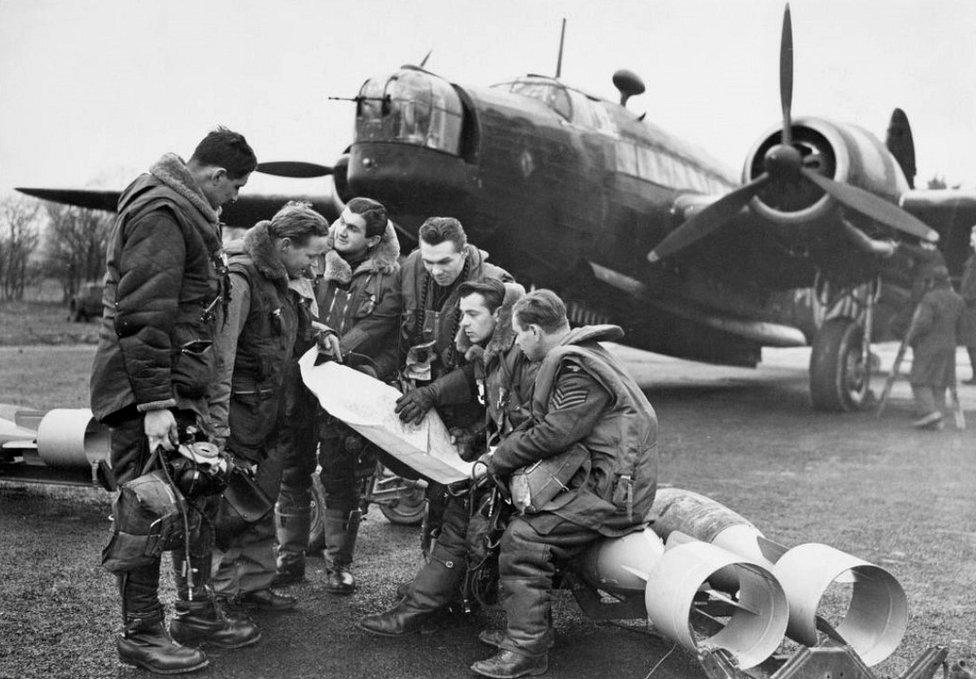
Two of the Czechoslovak crew shown here - Karel Valach (1st left) and Vilem Konstacky (4th from left) - died in the June raid
Dutch salvage workers have found some bone fragments and scraps of airmen's clothing in the debris of an RAF Wellington bomber shot down over the Netherlands in June 1941.
The Wellington had a six-man Czech crew, five of whom died. It was downed by a German night fighter, crashing at Nieuwe Niedorp, a village about 60km (37 miles) north of Amsterdam.
It had been bombing the port of Bremen.
The dig is part of a wider Dutch project to find wartime crews' remains.
A week ago the Czech Ambassador to the Netherlands, Katerina Sequensova, visited the site, external, where recovery work began on 25 May. Civil engineers and the Dutch defence ministry are involved, including military forensic identification specialists.
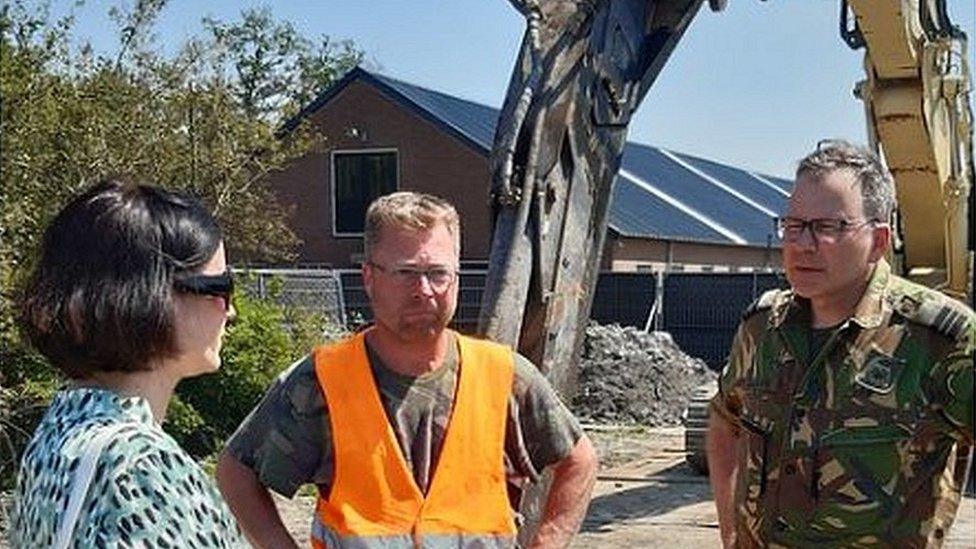
The Czech ambassador (L) met the salvage team at the crash site
In World War Two the RAF's 311 (Czechoslovak) Squadron had airmen who had fled Nazi-occupied Czechoslovakia and had then had combat experience in Poland or France. It was based at RAF East Wretham, near Thetford in Norfolk.
The squadron flew Vickers Wellington and Liberator bombers.
More than 5,500 aircraft crashed during the air war over the Netherlands in 1940-1945, and as many as 50 are believed to have crews' remains.
Geert Jonker, a member of the identification team at Nieuwe Niedorp, told Czech TV: "They never returned home to Czechoslovakia, so the least we can do is go out and search for them and give them a proper burial."
Read more on related topics:
The Wellington's pilot, Flight Sgt Vilem Bufka, parachuted out of the burning plane, broke a leg on landing and was captured by the Germans. He was imprisoned in Colditz Castle, with many other Royal Air Force POWs, and returned to Czechoslovakia in August 1945. He wrote a memoir - Bomber T2990 Gone Silent - and died in 1967.
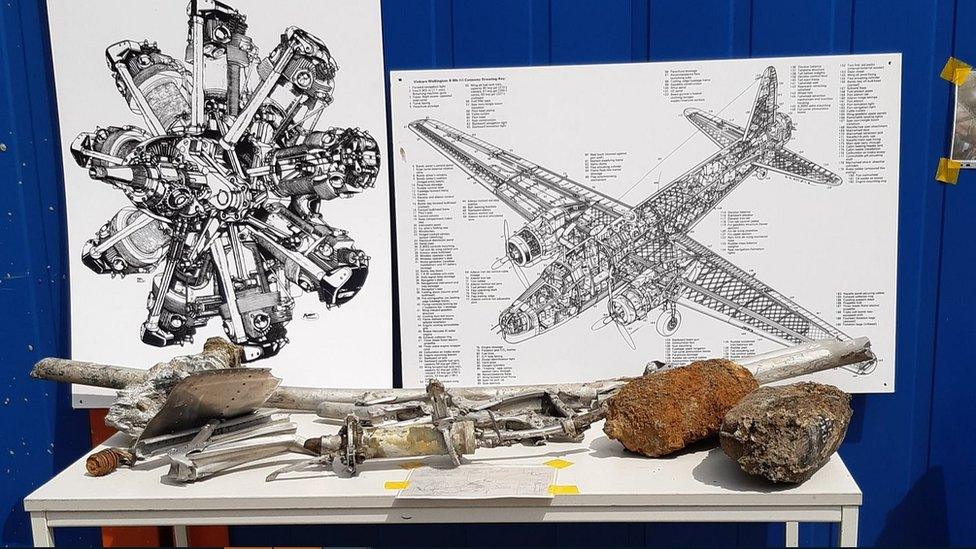
Debris from the Bristol Pegasus engines was found
The five crew who died were: co-pilot Alois Rozum, radio operator Leonhard Smrcek, navigator Vilem Konstacky, front gunner Jan Hejna and rear gunner Karel Valach.
In its tribute to the crew, external, the Czech Foreign Ministry says Valach had "met an English girl Doreen Francis Todd and they were married on 10 December 1940". It adds: "Their son was born in 1941."
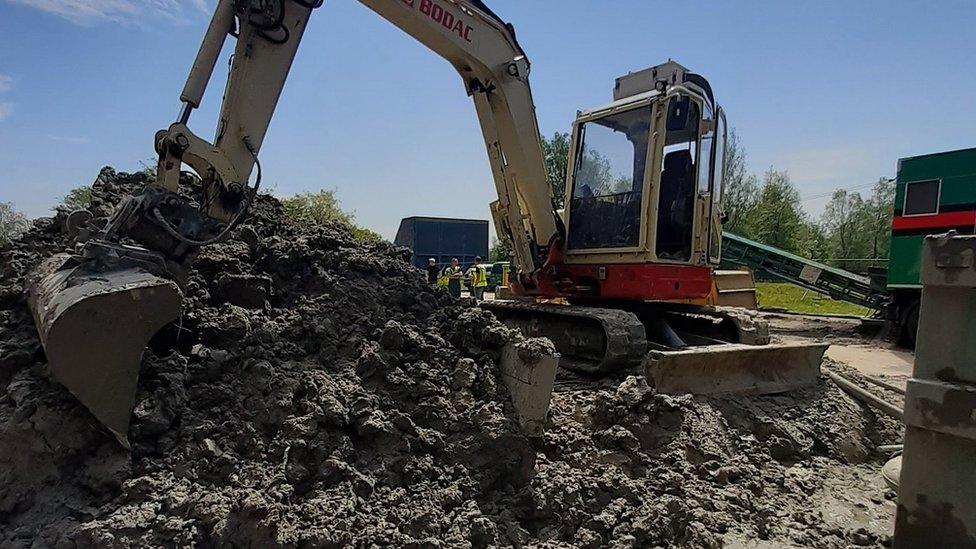
The bomber sank into mud when it crashed near the Dutch coast
The RAF Museum says, external 311 Squadron focused mainly on bombing the cities of Bremen and Cologne.
"The squadron's greatest success was the sinking of the blockade runner Alsterufer, which transported over 300 tons of rare tungsten from Japan to Germany," it says. The operation took place off the French Atlantic coast in 1943. During the war the Allies imposed a naval blockade to stop cargo ships bringing essential supplies to Nazi Germany.
You might also like:
Stevie Stevens flew 29 missions during World War Two
- Published18 October 2020
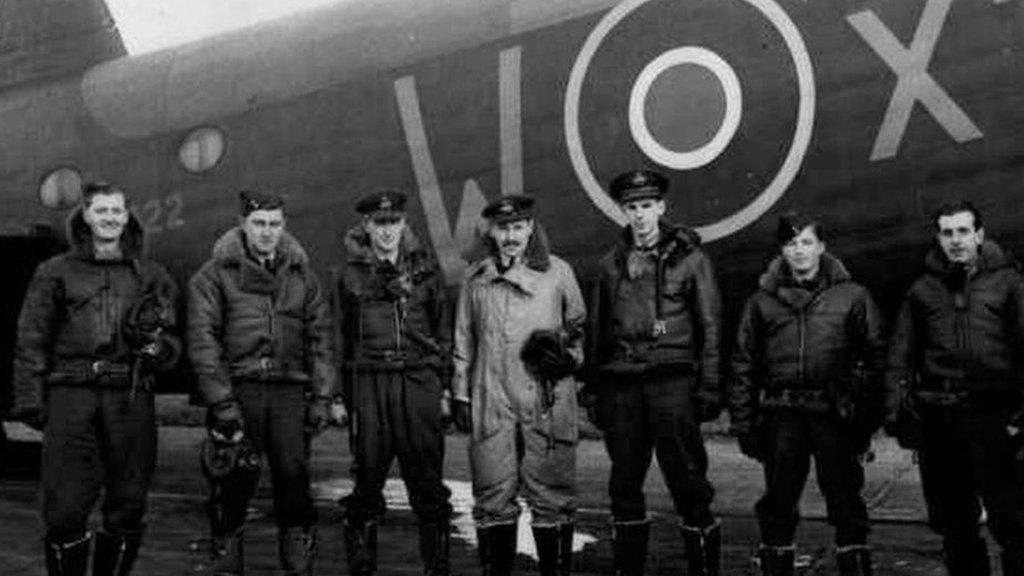
- Published15 September 2020
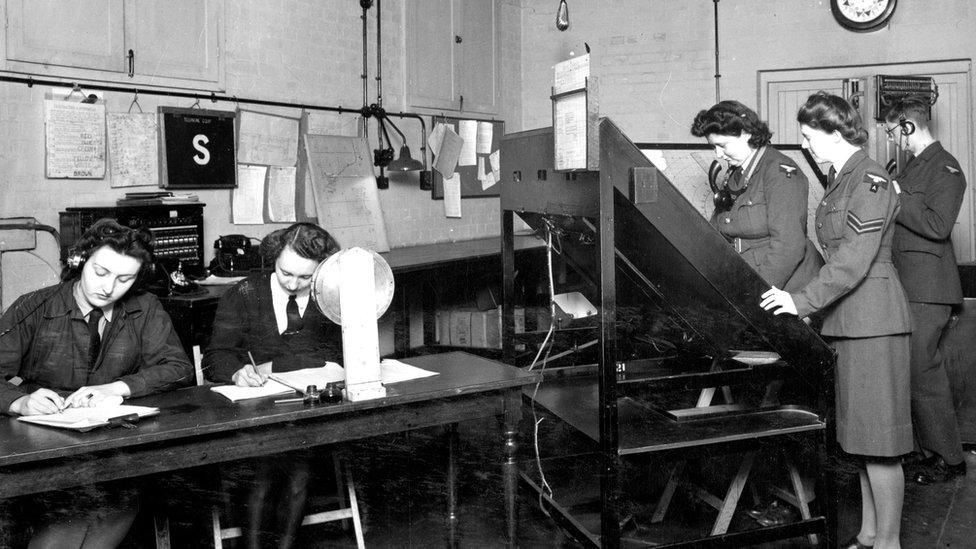
- Published3 August 2016
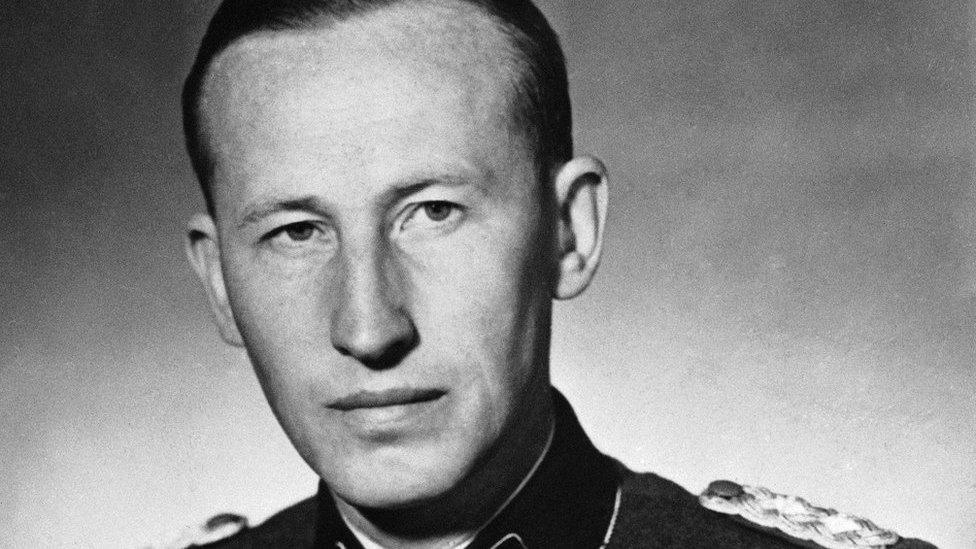
- Published10 September 2019
